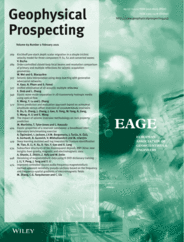
Full text loading...
 , Yiqun Peng1, Jingtian Tang2,4, Yong Li3
, Yiqun Peng1, Jingtian Tang2,4, Yong Li3
Magnetotelluric is one of the mainstream exploration geophysical methods, which plays a vital role in studying deep geological structures and finding deep hidden blind ore bodies. The seriousness of human electromagnetic noise causes a large number of abnormal waveforms in the time series of measured magnetotelluric data, and the data can no longer objectively reflect the underground electrical distribution. In this work, we propose a magnetotelluric time series data processing method based on K singular value decomposition dictionary training. First, a training matrix and a to‐be‐processed matrix are built with the pending magnetotelluric signals. Then, let the K singular value decomposition dictionary training process the training matrix to obtain an over‐complete dictionary reflecting the characteristics of the pending signal. Lastly, orthogonal matching pursuit is combined with an over‐complete dictionary updated in real time to sparsely represent the to‐be‐processed matrix and remove human electromagnetic interference in the signal. Experimental results show that the method can update the over‐complete dictionary in real‐time according to the pending magnetotelluric signals, realize the self‐learning signal–noise separation of magnetotelluric signals, and effectively retain low‐frequency information. Compared with method of directions dictionary learning, remote reference method, and orthogonal matching pursuit method, the reconstructed data of the proposed method can more accurately reflect the underground electrical structure information.

Article metrics loading...

Full text loading...
References


Data & Media loading...

